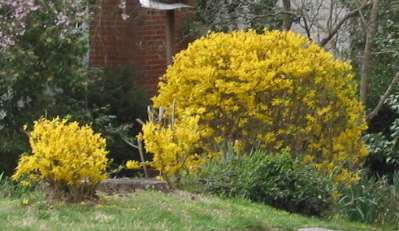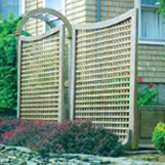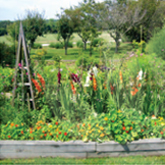
Hi everyone,
The weather is finally taking a turn for the better. Although as I write this it is very cloudy and windy so it’s still not very pleasant to be out for very long. But if you want a job to warm you up outside, pruning could be just the thing.
One of the questions to ask yourself when determining when to prune something is, when does this plant bloom? If you have a plant that blooms very early in the season such as rhododendrons, azaleas, lilacs or viburnums, you should plan to prune it after it blooms. If you prune it in the spring you will be removing the buds which would have become flowers. There are of course some exceptions to this rule. Fruit trees are pruned in late winter and they bloom very early. This is to create an open and sunny environment for the fruit to grow and you can’t do that after the tree has bloomed and fruit is growing. I also recommend pruning forsythia before it blooms. This is because it is such a large rangy shrub that if you don’t you won’t be able to see what you are doing.
Forsythia is a very popular shrub and for good reason. Just when we are desperate for some color it explodes in the most beautiful bright yellow and we all feel better when we look at it. The problem most people have with it is they don’t allow it to be what it is supposed to be. A forsythia is a large graceful shrub with arching vase shaped branches which reaches a mature size of 10-12′ high and wide. Most people ignore this and try to keep it to about 5′ and in the shape of a muffin. Even landscapers who should know better prune this way. I can’t tell you how many times I’ve had to do corrective pruning on many muffin shaped plants! Some landscapes had 10-15 varieties of shrubs and they all had the same shape. MUFFIN! The beauty of plants in a landscape is their variety and how they work together having different textures, sizes and shapes.
When pruning a forsythia you should use large, long handled loppers and prune out the thickest, oldest branches right at ground level. You can remove up to 1/3 of the plant’s branches at each pruning. You should also remove any dead branches, any branches that are not going in a pleasing direction, and the tips of branches long enough to arch down to touch the ground( because they will take root and grow into another plant.) Plants will only bloom well on young wood so this will encourage the growth of new wood for next season’s flowers. If your forsythia is very out of control and huge and there is no way to get to the center of the plant to prune it you can cut the entire shrub down to the ground. This will not kill it, but it will take a couple of years to get back to blooming size. Sometimes this is the only way to gain control.
Many multi-stemmed shrubs benefit from this yearly treatment. Weigelas, lilacs, dogwoods and willows to name a few. You should also know that it is always fine any time of year to prune dead or broken branches from any plant. Broken branches can damage a plant if they remain on and then fall and strip large areas of bark from the plant.
So get your sweater on and your sharp loppers and have at it. You’ll be happier with the natural look.
cheers!
Sarah

Muffins!




